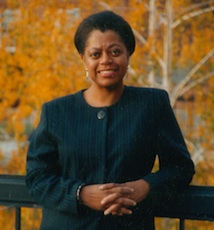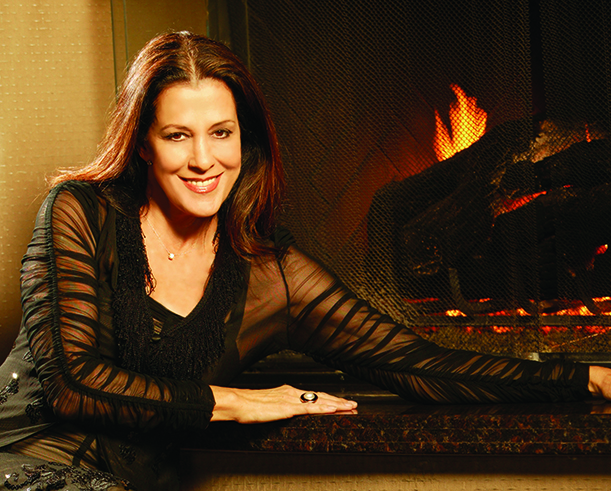What Makes Rita Coolidge the Musician for Every Era
Her collaborations with Joe Cocker and Kris Kristofferson made her famous, but hear her live at two free concerts in New York City and D.C.
Rita Coolidge performs this week at the Smithsonian in both New York City and Washington, D.C. Image courtesy of the artist

Joann Stevens, of the American History Museum, is the program manager of Jazz Appreciation Month (JAM). She last wrote about Gil Goldstein and Bobby McFerrin.
Rita Coolidge’s vibe is beautiful, buoyant and timeless, like the songs she sings and the stories she tells. Throughout a genre-blending musical career of 40-plus years she has gained fame as a headliner and a back-up vocalist in the worlds of rock n’ roll, country, blues, adult contemporary and pop. Billboard chart busters like “Higher and Higher” and “Me and Bobby McGhee,” with former spouse Kris Kristofferson, still comprise her signature sound. But interpretations of jazz and roots music expressing her Scottish-Cherokee heritage and Walela (the name of the vocal group she founded with her sister Priscilla and niece Laura) represent her also. Coolidge is a musician for every era, whichever one she’s in.
She credits her artistic endurance to a Walela nature, referencing the Cherokee word for hummingbird and the characteristics of the small, iridescent bird which range from the ability to fly backwards and change directions on a dime to being the only species able to sustain long-term hovering. Coolidge’s creativity is similarly adaptive. These instincts, she says, guide her as much today as they did when she was the somewhat shy but active youngest of four children humming around her childhood home in Lafayette, Tennessee.
In the free-wheeling, hippie counter-culture of the 197os, record labels had tried to make the lanky pop princess in cowboy hat, jeans and dark glasses a mainstream artist. Instead she veered musically everywhere and cajoled her A&M label to let her record an album with jazz idol Barbara Carroll. They did, but wouldn’t release the record. Coolidge played the beloved album for her friend Willie Nelson. He loved it and found inspiration for his album Stardust. Today, Nelson’s album is certified multi-platinum.
Coolidge doesn’t claim her album would have done as well but believes authenticity and being true to self are core strengths. The hummingbird creativity, she says with a laugh, “is probably the reason I never became a huge artist, but it’s why I’ve been steady.”
In August, visitors to the Smithsonian’s National Museum of the American Indian will get to hear this musical pioneer when Coolidge performs August 8 and August 10 at the museum in New York City and Washington, DC, respectively, for a free concert series honoring the exhibition “Up Where We Belong: Native Musicians in Popular Culture.” The exhibitions (slated to close in New York City on August 11) pays homage to Native artists who built America’s pop music culture. Though their Native identities were often obscured or denied recognition, their sound wasn’t. The list reads like a Who’s Who of American music: Mildred Bailey (Coeur d’ Alene), Illinois Jacquet (Lakota), Peter LaFarge (Narragansett), Ritchie Valens (Yaqui) and Jimi Hendrix (Cherokee heritage).
“It’s important that the Smithsonian recognize Indian people in music. Music is such an integral part of all Indian culture,” says Coolidge. “It’s our voice. I feel that in my heart and body.”
Performing, Coolidge says, is her gift to the world, how she offers “happiness and service,” values learned from her minister father and mother, and siblings. ”I feel like a bird with broken wings when I’m not singing.”
Both parents passed away in 2012, her father in February, her mother in August. They were married 75-years and modeled “a generosity of heart and spirit” that inspired family and community, she says. Lessons learned are present with her now “as I carry on their life purpose.”
She was present for both transitions, spurred to her father’s side “because the message literally came to me through Spirit while I was on the road, to get to northern California where they lived. I sang two hours with my mother,” each of them holding a hand.
“I feel that you get the blessing to be chosen, to be there when the person passes over. Daddy prepared me to be there to help him.”
Her musical activist sister Priscilla, described by Coolidge as “the one who always carried the feather, the message” composed the song Cherokee in tribute. ”It expresses who he was and still is, a great, powerful and gentle man who is a visual artist, musician and poet. He lives on in such beauty.”
Coolidge and her husband were at their home with her mother when the time came for them to sing her over.
Stories pour forth from her easily, with a nectar-like richness that feed the soul bits of known and unknown history of defining moments in American musical culture.
In 1970, after graduating from Florida State with a degree in art, Coolidge headed West to California with friends and music contemporaries Delaney and Bonnie and Leon Russell. She was plunged full throttle into what she calls “Rock n Roll University” as a singer and choir director for the Mad Dogs and Englishmen Tour with British rocker Joe Cocker.
The tour marked a defining moment in Coolidge’s life and American pop culture. Cocker had just concluded a grueling, exhaustive schedule and relished rest. Naively “he didn’t grasp that he couldn’t decline a seven week tour” already booked by management. “Joe wasn’t stupid,” Coolidge says, searching for the right words, “but he was so innocent at that time. He was a young guy from Sheffield, England, who took way too many drugs and walked around in a state of wide-eyed wonder.”
Russell saw a chance to help a friend and himself, recruiting Coolidge to find and prepare a choir who could hit the road in a week. Rehearsals ran 12 hours a day or more, she recalls. But a week later 55 men, women and children, including Cocker, and a dog boarded a chartered DC-8 to begin a 48-night, 52-city tour.
The tour’s name references a song composed by British playwright and composer Noel Coward. Allegedly it also refers to Cocker’s feelings at the time. The results, however, are uncontested. The Mad Dogs and Englishman Tour produced rock history, an album considered one of the greatest live albums of all time, and a documentary with legendary performances of Delta Lady (composed by Russell and inspired by Coolidge), The Letter, and Little Help From My Friends, featuring Led Zepplin guitarist Jimmy Page and Procol Harem drummer BJ Wilson.
During the tour she says “I met great people and some who didn’t have such great intentions. It was like a battleground. I would get on the plane at night and usually sit with Joe. I was 5’7″ and weighed under 100 pounds.” When she finally told Cocker she was quitting the tour, she remembers how quiet he became before saying, “You can’t leave. You’re the only friend I’ve got.”
It was years, she says, before she could watch the documentary without falling apart. At the premiere she’d sat trembling in her seat, the tears flowing.
Coolidge offers two final stories. In the 1990s, Native musician and composer Robbie Robertson (Mohawk) asked her to bring family members together to help him develop authentic Native music for the television mini-series the Native Americans. “Robbie knew the family sang.” The project gave birth to the group Walela.
During a concert with Carlos Nakai, Mary Youngblood and several other Native artists Coolidge recalls being asked to conclude the concert with them all performing together. ”I said let’s do Amazing Grace.” The response was “You mean that old Anglo song?” Indeed she did. The reason why has become a core part of her performing repetoire: “If I feel the audience has the the capacity to have the reverence or ability to honor the song. And I can read a crowd pretty well,” she says.
In the 1830s when Andrew Jackson was president, the Indian Removal Act mandated the removal of Indians east of the Mississippi from their homelands to make way for white settlers. Their act resulted in a death march for thousands known as The Trail of Tears.
The Cherokee was one of five tribes known as The Five Civilized Nations, says Coolidge. “Intimate unions of lives and faith” had integrated Native and non-native people culturally, she says. Indians were Christians and hymns like Amazing Grace were learned in white churches and integrated into Native culture and music.
“Amazing Grace was the song most sung on the Trail of Tears. When sung in Cherokee, it is the Cherokee National Anthem, she says.
“I sing it in 99 percent of the concerts I do and tell the story,” says Coolidge. “In most cases people stop their fidgeting or eating. It’s like an arrow that pierces peoples’ hearts so they can stop and remember something beyond time that connects them to the song.”
UPDATE: The date of the concert in Washington, D.C. is August 10. We regret the error.
